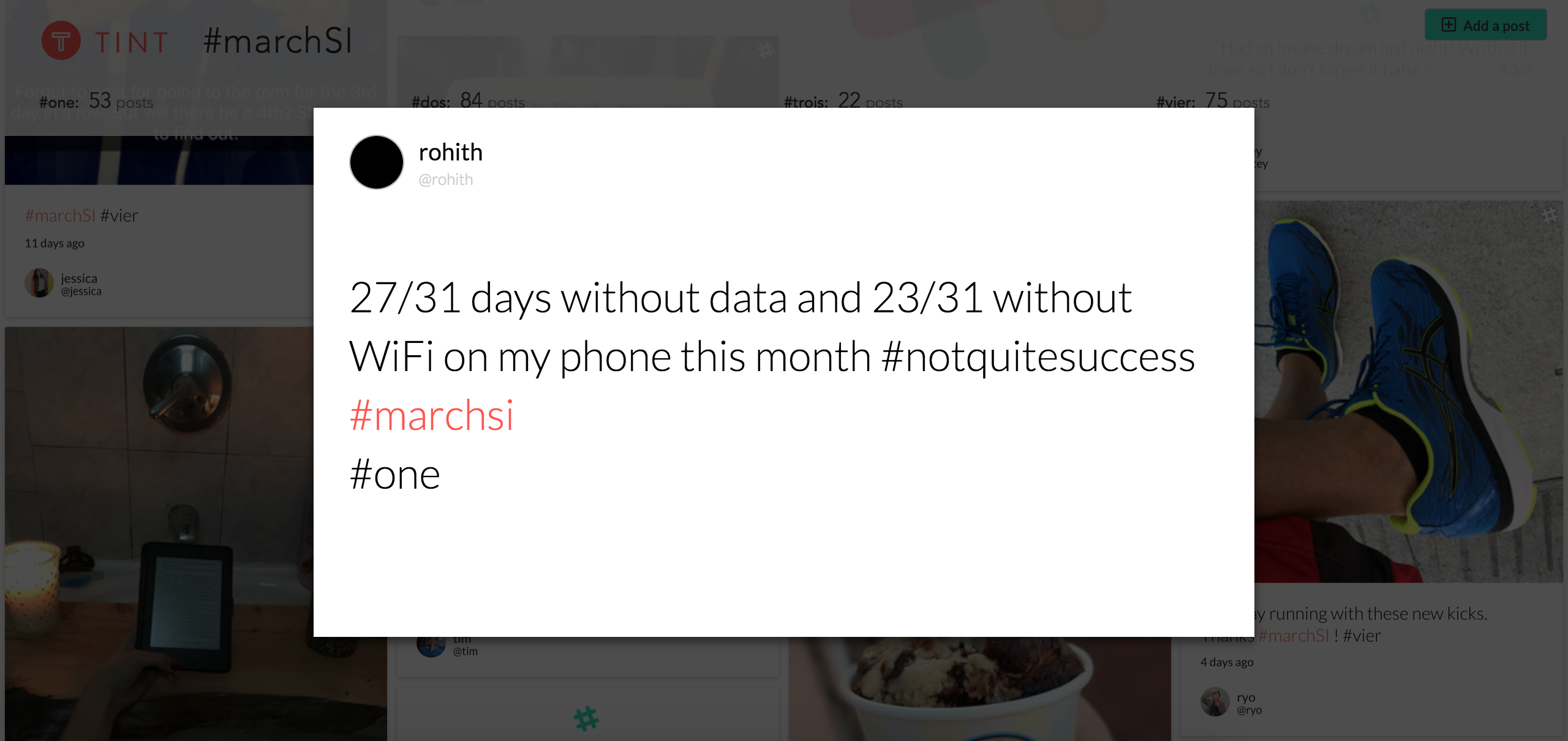Many big companies started as side projects of employees while they were at other companies. Github was a side project of Tom Preston Werner while he was working at powerset. Asana was developed as a side project from Dustin Moskowitz while he was working at Facebook. The list goes on. But not all companies let their employees pursue their own side projects and safely retain full ownership of them.
At TINT we understand that great things can happen when we let our employees pursue their side projects. We want to encourage entrepreneurship and we know that attracting top talent means letting our employees — many of whom are here at TINT because they are interested in startups and growing a company — work on their own projects in their off-hours.
When we set out to do this, we realized that there are some legal issues that arise when employees want to pursue their side projects that can be difficult to work around. When a couple of employees came forward with questions about how to safely pursue their own projects outside of work, we talked to our lawyer. Here’s the guidelines we came up with, based on what we learned about how our employees can make sure they own their personal projects outside of work:
Our Rule for Side Projects
Based on what we learned, we created a policy that employees could safely pursue their own projects provided that they:
- Used their own personal equipment (no work laptops!)
- Did not work on their projects during office hours
- Did not work on their project in the office.
Employees should always refer to their contracts to see what kind of rules apply to their work outside of work. In many companies, ambiguous clauses around ownership of side projects can be frustrating for employees. They feel like they should have the freedom to pursue their ideas outside of work. But companies still make the contracts very ambiguous. Joel Spolsky from Fogcreek software explains this really well:
Even if a company decided, “oh gosh, we don’t want to own the 5pm – 9am inventions,” they would soon get into trouble. Why? Because they might try to take an investment, and the investor would say, “prove to me that you’re not going to get sued by some disgruntled ex-employee who claims to have invented the things that you’re selling.” The company wants to be able to pull out a list of all current and past employees, and show a contract from every single one of them assigning inventions to the company. This is expected as a part of due diligence in every single high tech financing, merger, and acquisition, so a software company that isn’t careful about getting these assignments is going to have trouble getting financed, or merging, or being acquired, and that ONE GUY from 1998 who didn’t sign the agreement is going to be a real jerk about signing it now, because he knows that he’s personally holding up a $350,000,000 acquisition and he can demand a lot of money to sign.
The good news for employees is that in California, even if an employee contract claims that any work of an employee done at any point of time belongs to the company, they cannot enforce this clause in California. The only exception is that
1. Employee should use their personal equipment ( and not employer’s equipment, supplies, facilities or trade secret information) and work on his project outside of work hours
2. Invention cannot be a result of any work performed by the employee for the employer
California’s Labor Code, Section 2870 reads:
a) Any provision in an employment agreement which provides
that an employee shall assign, or offer to assign, any of his or her
rights in an invention to his or her employer shall not apply to an
invention that the employee developed entirely on his or her own time
without using the employer’s equipment, supplies, facilities, or
trade secret information except for those inventions that either:
- Relate at the time of conception or reduction to practice of the invention to the employer’s business, or actual or demonstrably anticipated research or development of the employer; or
- Result from any work performed by the employee for the employer.
b) To the extent a provision in an employment agreement purports
to require an employee to assign an invention otherwise excluded from
being required to be assigned under subdivision (a), the provision
is against the public policy of this state and is unenforceable.
Most of the confusion stems from point b , which states that ‘Invention cannot be a result of any work performed by the employee for the employer’. This is usually difficult to determine if you’re at a larger company with multiple products. For example, if you’re working at Google, Google has a product in many lines of business. Usually in that case, it’s better to talk to the compliance team within the company and seek approval.
Example Scenarios
Here are a few scenarios that can help you understand if your idea conflicts with your employer’s’ business:
Scenario 1: Let’s say you’re hired as an engineer at Google to work on Google search. After few months of working on the search platform, you feel the need to create a search platform for a niche audience. You decide to spend countless nights coding up an MVP only to realize that your side project is directly conflicting with Google’s core business.
Can you pursue this? No.
Scenario 2 — Maybe: Let’s say you’re hired as a deployment engineer at Pied Piper. You quickly write a tool that can make deployments a cinch and you see a huge opportunity for this tool. Can the company claim the rights to your side project? Maybe not.
Can you pursue this? Maybe.
Scenario 3 — Go for it: Let’s say you’re hired as an engineer at TINT to create amazing visual media displays for our customers and while you’re commuting to work, you stumble upon this idea of making an app that can send ephemeral texts. Can you pursue this idea? Definitely yes and maybe Facebook would be willing to offer you 4 billion for the same.
Can you pursue this? Yes!
Our Policy in Action
The motivation to create a clear and well-defined policy that supports employee entrepreneurship was jumpstarted when two of our developers, Brett and Rohith, started to bring up concerns and issues regarding the IP assignment protocol. Since then, they have built takeaim.io, to help increase transparency in what employees are working on. They followed the guidelines as stipulated and have complete ownership of the IP. In fact, TINT is a happy client of their product. We want to foster an environment that allows our employees to create products that solve real problems, regardless of whether the projects belong to TINT.
At TINT always want the best talent to come work with us. The best of the best are always filled with ideas and the last thing you want to do is to close the doors on their creative output. So giving your employees the freedom to pursue their ideas can only result in two things:
- They create a successful product and quit your company
- They realize that their idea is not viable and continue to work at the company
Not all companies and products are successful — in fact, most startups fail. So there is a high chance that you can retain your employee by giving him or her the creative freedom to pursue their idea. But if you shut the doors you’re doing a disservice to yourself and the company. The employee will continue to work at the company disgruntled and at some point he or she would call it quits to avoid the bureaucracy and go on to pursue his/her idea. So if you’re an employer struggling to figure out what your policy should be when it comes to letting employees pursue their side projects, you should definitely weigh the odds and make the right decision. If you’re an employee who works for a company that doesn’t let you work on your side projects, we’re always looking for talented, ambitious people: TINT Jobs.




